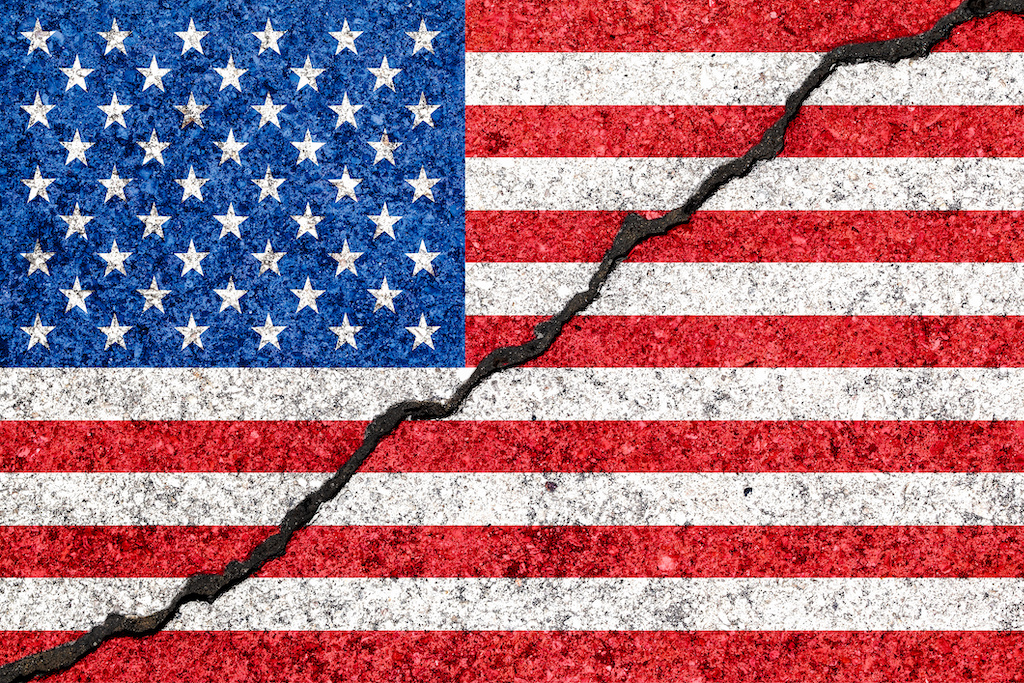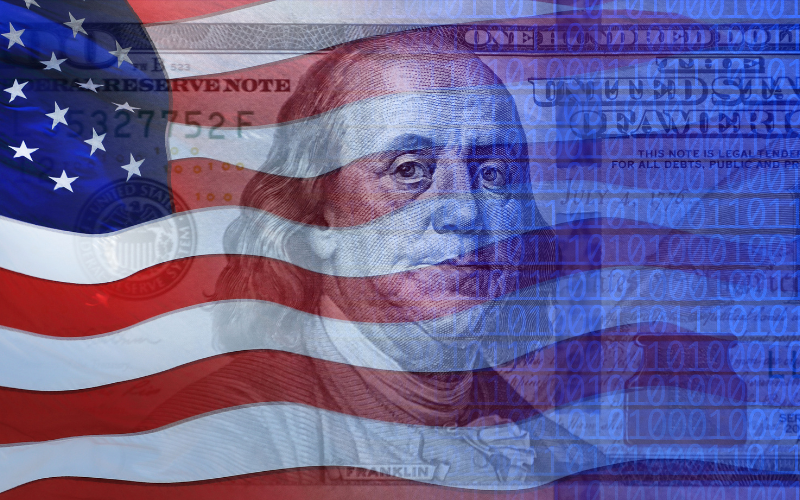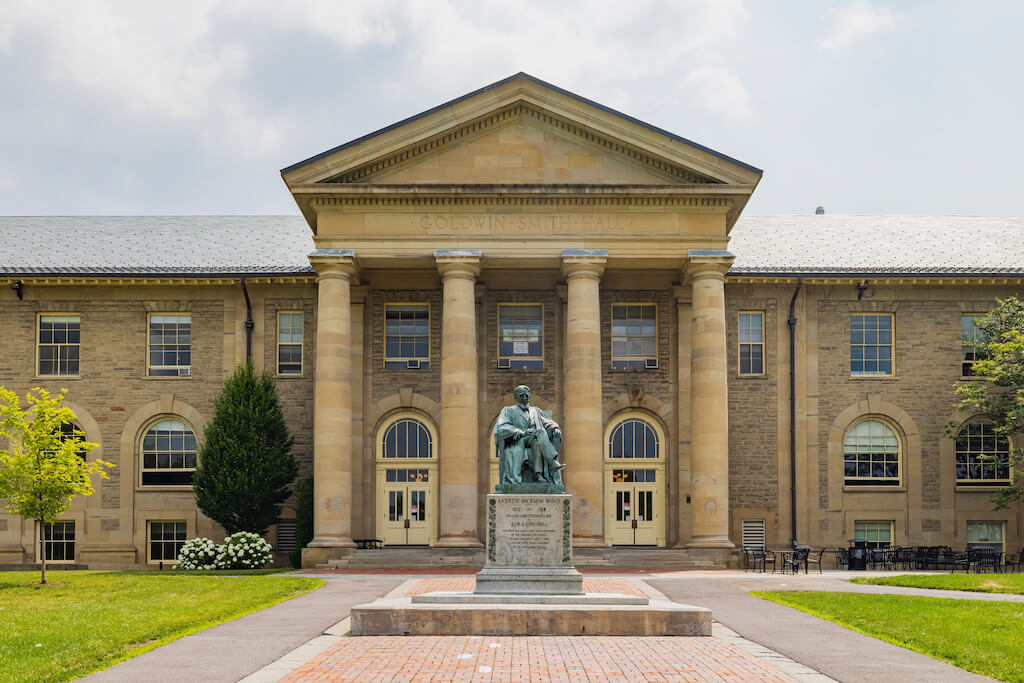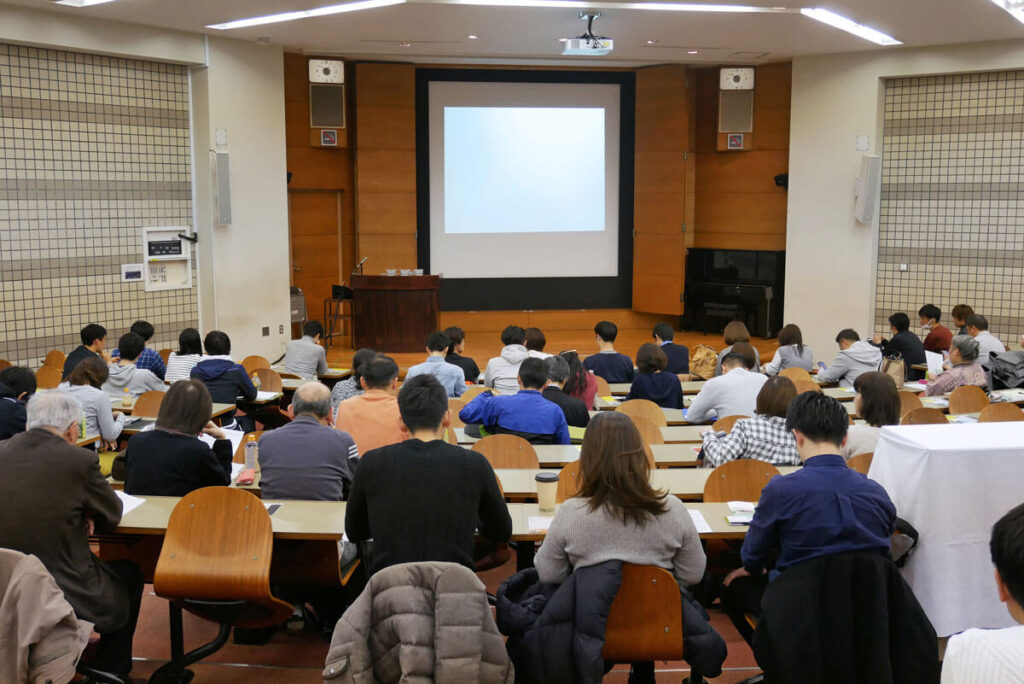George Packer, author of soon-to-be-released Last Best Hope: America in Crisis and Renewal among other books, is also a staff writer for The Atlantic. Mr. Packer just wrote an excerpt from his latest book for the most recent issue of The Atlantic.
“How America Fractured into Four Parts” is the title of Mr. Packer’s article with the subtitle of “People in the United States no longer agree on the nation’s purpose, values, history, or meaning. Is reconciliation possible?” He observes that “nations tell stories to understand what they are, where they come from, and what they want to be.”
National narratives are similar to personal ones in that they are the stories that address our deepest needs and desires. There is never one; they compete with each other and constantly change.
Tracking the evolution of national narratives will reveal elements important to understanding a nation’s propensity to change. Prior to the 1970s, America had two national narratives. Each was represented by a political party.
The Republican party represented Americans who wanted to get ahead, and the Democratic party represented those who wanted a fair shake. Unlike today, the two parties were arguing about the same country.
According to Mr. Packer, the 1970s ended postwar, bipartisan, and middle-class America and the relatively stable narratives of getting ahead and getting a fair shake. In their place, four rival narratives emerged. These four narratives have taken turns in influencing our elections as well as extending and deepening the lines of fracture in U.S. society.
Since the 1970s, each of these four narratives has taken a turn at shaping its influence on America. According to Mr. Packer, “They [the narratives] overlap, morph into one another, attract and repel one another.” The reason for the intertwining, repulsion, attraction, and morphing is that these narratives all emerged from the same base.
“Free America” is the term given to narrative number one. Since 1971, it’s been the most powerful narrative politically. It draws on libertarian ideas and came to power with the election of Ronald Reagan as president in 1980.
It’s important to note that “there would have been no Reagan revolution without the 1970s, a period of time with high inflation, high unemployment, gas shortages, chaos in liberal cities, and epic government corruption and incompetence.”
Milton and Rose Friedman’s book, Free to Choose, blamed our country’s decline on business regulations and other government interventions in the market. Ronald Reagan made “Free America” seem like the promised land, a place where all were free to pursue happiness. In Packer’s words, the movement “saw Americans as entrepreneurs, employees, investors, taxpayers, and consumers – everything but citizens.”
The policies of “Free America” eroded the way of life for many of its adherents. “Free America” pushed the country into its long decline in public investments.
In addition, secure employment and small businesses disappeared. Their disappearance destroyed communities. When businesses closed, towns lost their Rotary Clubs and newspapers. The resulting isolation bred distrust in authorities such as schools, churches, unions, banks, and the news media.
Mr. Packer notes that Reagan cared about the functions of self-government more than his most ideological supporters. He was able to persuade and to compromise (his battles and compromises with House Majority leader Tip O’Neill were legendary).
After Reagan left office and after the Soviet Union split up, “Free America” lost its original narrative, becoming darker and more extreme. The quality of its leaders deteriorated as well.
“Smart America” is the term given to narrative number two. The knowledge economy created a new class of Americans with college degrees and salaried jobs in information technology, computer engineering, scientific research, design, management consulting, civil service, financial analysis, law, journalism, the arts, and higher education.
Members of this new class went to college with each other, married people with similar educational and job statuses, and gravitated to great neighborhoods in major metropolitan areas. They work hard to pass on their advantages to their children.
“Smart America” people dominate the top 10% percent of American incomes and exert substantial influence on U.S. economy and culture. They believe in credentials and expertise as qualifications for entry into their group.
There is some overlap in the views of members of “Free America” and “Smart America.” Each group embraces capitalism and the principles of meritocracy.
The difference is that “Smart America” adherents believe that some government intervention is needed to give everyone an equal chance to move up. Racial injustice demands remedies such as affirmative action. The poor need a social safety net. Workers dislocated by trade agreements or automation should be retrained for new jobs.
There is a limit to how much government “Smart America” will accept. Social liberalism is much more acceptable to them than the redistribution of wealth. Politically, “Smart America” migrated to associating with the Democratic Party. The turn of the century (2000) was the high-water mark of “Smart America.”
The winners in “Smart America” withdrew from national life to spend more time working, researching children’s schools, planning their activities, shopping for the right kind of food, and following the news. The winners lost the capacity and need for a national identity, which is why they can’t grasp its importance for others. Their passionate loyalty goes to their family.
Under the supervision of their parents, aunts, and uncles, the children of “Smart America” devote much of their energy to extracurricular activities and personal essays that navigate between boasting and humility. Graduation from an exclusive school marks the entry into a successful life.
As a result, a social system intended to expand equality has become an enforcer of inequality. Another problem with this narrative is that by abandoning patriotism, it will ensure that other narratives will claim it.
“Real America” is the term given to narrative number three. “Real America” refers to the common people who work with their hands. “Real America” believes that a shiftless underclass and a parasitic elite depend on its labor.
From its beginnings, “Real America” has been religious and hostile to modern ideas and intellectual authority. It has a strong nationalistic character with an isolationist attitude toward the rest of the world. The narrative of “Real America” is white Christian nationalism.
Mr. Packer says that the invasion of Iraq in 2003 squandered the national unity following 9/11. The cost for Americans fell on the men and women from small towns and inner cities; meeting anyone in uniform in Iraq who came from a family of educated professionals was uncommon. This elite failure to participate in the human cost of war seeded cynicism in the downscale youth.
The financial crisis and the Great Recession of 2008 also impacted this group. Many middle-class Americans saw their home values diminish, while banks were bailed out and bankers kept their jobs. Trust was eroded; the system was rigged to benefit the insiders.
Donald Trump aligned his platform to the “Real America” narrative like no other presidential candidate before him. Trump abused every American institution from his political pulpit, and his people applauded his speeches.
“Just America” is the term given to narrative number four. It represents the younger generation who came of age, according to Mr. Packer, “in the shadow of accumulating failures by the ruling class – especially by business and foreign policy elites.”
The “Just America” narrative sees American society as a fixed hierarchy, like a caste system. They look to the history of slavery and segregation to understand the present. To them, talk of progress is false consciousness, and the hierarchical position of “whiteness” over “blackness” is eternal. What had been considered American history is defined as white and supremacist.
“Just America” isn’t only concerned with race, according to Mr. Packer. The most radical version of the narrative brings together the oppression of all groups – America is a malignant force beyond any evil on Earth.
Mr. Packer states that there are too many things that “Just America” can’t talk about in order to solve the toughest problems. Explaining poverty is complex, and explanations like individual agency do not exist in the “Just America” narrative. The narrative can only talk about police violence and not about the violence caused by young black men.
Similarly, the mild phrase “achievement gap” used to describe the academic differences between black children and white children has been banished. Banish assessments, according to the “Just America” narrative, and you’ll end racism along with the gap.
If the narrative helps to create a more human criminal justice system and brings full equality to Black Americans, Mr. Packer writes that it will live up to its promise. He adds that in some ways, “Just America” resembles “Real America” with the difference that it has entered the conflict from the other side. “Just America” and “Real America” share a skepticism about the universal ideas of the founding documents and the promise of America as a multi-everything democracy.
“Just America” is a narrative of the young and well-educated which is why, in Mr. Packer’s opinion, it misreads or ignores the Black and Latino working classes. Economic stagnation and technological upheaval have contracted professional jobs and made the meritocratic rat race even tougher. As a result, we have a large population of overeducated, underemployed young people living in our cities.
Anger from “Just America” is channeled at the narrative that they are closest to, “Smart America.” Most members of “Just America” are part of the meritocracy and have no desire to give up its advantages. They want to be the first to adopt the terminology of the “Just America” narrative.
The fear of failing to say the right thing is part of the competitive spirit of “Smart America.” The parameters of acceptable expression are much narrower than they used to be, according to Mr. Packer. The loudest public voices in a controversy will prevail. The new rules are not liberal values; they are post-liberal values.
Mr. Packer writes that all four of the narratives that he described have emerged from America’s failure to sustain and enlarge the middle-class democracy. Each responds to real problems. Each offers a value that the others need and lacks one that the others have. Each one competes for status and crowns winners and losers.
Mr. Packer says that he doesn’t want to live in any of the four narratives. Unfortunately, we remain trapped in two “countries.” Each country represents two narratives. “Smart” and “Just” are on one side, and “Free” and “Real” are on another.
Our future depends on getting along with each other. Separation or conquest by any one of the narratives is not a future that works. Unfortunately, the tensions between the two “countries” will persist.
I have not read George Packer’s book since it is not yet in print. I happened to read The Atlantic article after seeing a tweet about it. I’ve ordered a copy of the book since its narrative(s) seems interesting. I agree with him that I don’t want to belong to any of these narratives, either.
Whether or not there are two “countries” and four narratives, or four “countries” and eight narratives, isn’t so important. Understanding the perspectives of each of the narratives is important as is convincing members of the narratives to reach across the gaps to forge alliances on common points.
Sadly, the most stalwart followers of each of these narratives may not be willing to reach across the gap to extend a hand. Not only that, but many followers will likely never change.
Will an expansion of the ever-shrinking middle class change these narratives? I’m not sure.
Will our politicians ever deviate from their alliance to one of the two “countries” described by Mr. Packer? Not as long as the portion of the electorate that supported them belongs to the narrative(s) assigned to their country. The only thing that is certain is that there is not an easy or short-term solution that would satisfy any of these groups.
As I continue to mull over the narratives of George Packer’s article, I yearn for more detail that may be provided in his book. As an educator and a businessperson, my background is more aligned with “Smart America” and “Free America.” At the same time, I have relatives that likely identify with the “Just America” and “Real America” narratives.
I couldn’t find a recommendation in Mr. Packer’s article to a way out of this two “country” divide. The current “narrative” for those of us who follow changes in technology that affect jobs is that artificial intelligence will continue to carve out middle-class jobs. If that’s the case and we can’t rebuild the middle class through reskilling and education, the schism between the two “countries” is likely to widen.
Thank you, George Packer, for a thought-provoking article (and book). I look forward to my conversations with friends and colleagues who read the article and who choose to read the book.











